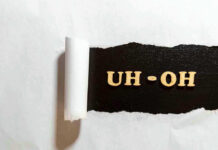
The claim that the poverty line is now $100,000 is spreading fast, but the truth is far more complicated—and it’s not what the government says.
Story Snapshot
- The official poverty line for a family of four in 2025 is $32,150, not $100,000.
- Many families in high-cost cities say they struggle to make ends meet even with incomes above $100,000.
- The debate is about real-world affordability, not official government standards.
- Experts agree the current poverty measure doesn’t reflect the true cost of living in expensive areas.
What the Government Says About Poverty
The U.S. government sets the official poverty line based on a formula from the 1960s, updated each year for inflation. For 2025, a family of four is considered poor if their income is below $32,150. For a single person, the threshold is $15,650. These numbers are used to determine eligibility for federal programs like Medicaid, food stamps, and housing assistance. The government also tracks a Supplemental Poverty Measure, which accounts for local costs and non-cash benefits, but even this measure rarely approaches $100,000 in any part of the country.
The Real Cost of Living in Expensive Cities
While the official poverty line is low, many Americans in cities like San Francisco, New York, and Los Angeles say they struggle to afford basic needs even with incomes well above $100,000. Housing, childcare, healthcare, and transportation costs have skyrocketed in these areas, making it hard for families to get ahead. Some experts and advocacy groups argue that a “living wage” or “self-sufficiency standard” should be used instead, especially in high-cost regions. These standards can range from $80,000 to $120,000 for a family of four, depending on the city.
Why the $100,000 Myth Is Spreading
The idea that $100,000 is the new poverty line is not an official government standard, but it reflects a growing frustration with the disconnect between policy and reality. Social media, news outlets, and think tanks have amplified stories of families who earn six figures but still feel financially insecure. This debate is pushing policymakers to reconsider how poverty is measured and whether federal programs should be adjusted to reflect regional differences. Critics warn that raising the poverty line to $100,000 nationally would dilute resources and could hurt families in lower-cost areas.
The conversation about poverty is shifting, but the official numbers remain unchanged. Families in high-cost cities are calling for more realistic standards, while experts stress the need for nuance and local context in any future reforms.
Sources:
Nasdaq: This Income Is Considered Poverty Level in 2025
U.S. Census Bureau: Poverty in the United States: 2024
U.S. Department of Health and Human Services: 2025 Poverty Guidelines
Medicaid Planning Assistance: Federal Poverty Guidelines 2025












